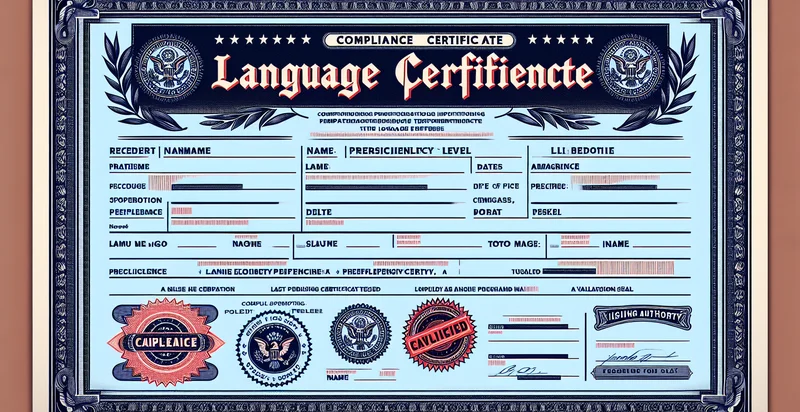Identify language of compliance certificate
using AI
Below is a free classifier to identify language of compliance certificate. Just input your text, and our AI will predict what type of compliance certificate it is - in just seconds.

Contact us for API access
Or, use Nyckel to build highly-accurate custom classifiers in just minutes. No PhD required.
Get started
import nyckel
credentials = nyckel.Credentials("YOUR_CLIENT_ID", "YOUR_CLIENT_SECRET")
nyckel.invoke("language-of-compliance-certificate", "your_text_here", credentials)
fetch('https://www.nyckel.com/v1/functions/language-of-compliance-certificate/invoke', {
method: 'POST',
headers: {
'Authorization': 'Bearer ' + 'YOUR_BEARER_TOKEN',
'Content-Type': 'application/json',
},
body: JSON.stringify(
{"data": "your_text_here"}
)
})
.then(response => response.json())
.then(data => console.log(data));
curl -X POST \
-H "Content-Type: application/json" \
-H "Authorization: Bearer YOUR_BEARER_TOKEN" \
-d '{"data": "your_text_here"}' \
https://www.nyckel.com/v1/functions/language-of-compliance-certificate/invoke
How this classifier works
To start, input the text that you'd like analyzed. Our AI tool will then predict what type of compliance certificate it is.
This pretrained text model uses a Nyckel-created dataset and has 45 labels, including Arabic, Basque, Bengali, Bulgarian, Catalan, Croatian, Czech, Danish, Dutch and English.
We'll also show a confidence score (the higher the number, the more confident the AI model is around what type of compliance certificate it is).
Whether you're just curious or building language of compliance certificate detection into your application, we hope our classifier proves helpful.
Related Classifiers
Need to identify language of compliance certificate at scale?
Get API or Zapier access to this classifier for free. It's perfect for:
- Automated Document Review: This use case involves a system that automatically identifies and flags compliance certificates within large volumes of document archives. By classifying the language of compliance certificates, organizations can streamline their document review process and ensure that all necessary compliance documents are accounted for and correctly filed.
- Regulatory Audit Preparation: Companies can utilize the language of compliance certificate identifier to prepare for regulatory audits more efficiently. By isolating compliance certificates based on their characteristics, organizations can easily present the required documentation to auditors, reducing preparation time and potential errors.
- Risk Management: In risk management processes, this function can help identify compliance certificates that may be outdated or no longer valid. Organizations can automate the review process to ensure that only current and valid compliance certifications are in use, mitigating potential compliance risks.
- Supplier Compliance Monitoring: Businesses can apply the identifier to monitor compliance certificates from suppliers. By ensuring that all supplier certificates meet compliance standards, companies can maintain the integrity of their supply chain and avoid risks associated with non-compliance.
- Maintenance of Compliance Records: This use case focuses on maintaining an accurate and up-to-date database of compliance certificates. The identifier will help automate the entry and categorization of new compliance documents, making it easier for organizations to keep track of their compliance obligations over time.
- Training and Awareness: Organizations can use the identifier as part of internal training programs to educate employees about the importance of compliance certificates. Understanding how to identify compliant documents will empower staff to help uphold compliance standards across the business.
- Integration with Compliance Software: The identifier can be integrated into larger compliance management systems to enhance document processing capabilities. This synergy will allow for better data analytics and reporting on compliance certificate statuses, contributing to more informed compliance decision-making.


